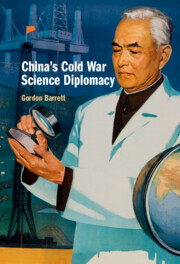Book contents
- China’s Cold War Science Diplomacy
- China’s Cold War Science Diplomacy
- Copyright page
- Dedication
- Contents
- Tables
- Acknowledgements
- Note on the Text
- Abbreviations
- Introduction
- 1 A Scientific United Front at Home and Abroad
- 2 Between Pugwash and the Party-State
- 3 ‘Friends and Comrades, We Fight against Imperialism’
- 4 Linking the Local, National, and International
- 5 A Spectrum of Propaganda and Scientific Exchange
- Conclusion
- Select Bibliography
- Index
4 - Linking the Local, National, and International
Scientific Organisations and Foreign Affairs in the Peking Science Symposium Conferences, 1964–1966
Published online by Cambridge University Press: 18 August 2022
- China’s Cold War Science Diplomacy
- China’s Cold War Science Diplomacy
- Copyright page
- Dedication
- Contents
- Tables
- Acknowledgements
- Note on the Text
- Abbreviations
- Introduction
- 1 A Scientific United Front at Home and Abroad
- 2 Between Pugwash and the Party-State
- 3 ‘Friends and Comrades, We Fight against Imperialism’
- 4 Linking the Local, National, and International
- 5 A Spectrum of Propaganda and Scientific Exchange
- Conclusion
- Select Bibliography
- Index
Summary
The 1964 Peking Science Symposium and 1966 Summer Physics Colloquium were the two largest-scale international science congresses hosted by Mao’s China. Chapter 4 delves into the inner workings of these events, which brought hundreds of visitors to the People's Republic of China from throughout Asia, Africa, Latin America, and Oceania. From planning through to post-conference tours organised for participants, it examines the network of organisations and individuals at national and local levels that collectively shaped these major initiatives to bring foreign scientists to China on the cusp of the Cultural Revolution. In doing so, it shows the extent of integration and coordination between science and foreign relations systems during the Mao era.
Keywords
- Type
- Chapter
- Information
- China's Cold War Science Diplomacy , pp. 133 - 169Publisher: Cambridge University PressPrint publication year: 2022

